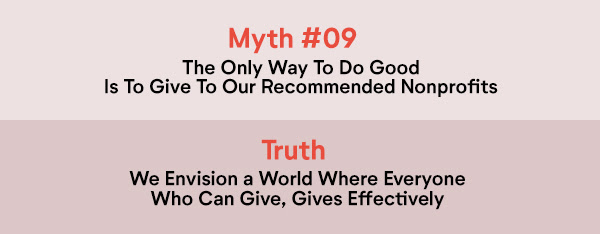
In a previous newsletter, I wrote about “striving for perfection,” which for us at The Life You Can Save means striving to do the “most good.” When it comes to philanthropy, we believe doing the “most good” means giving generously to people living in extreme poverty through our amazing, cost-effective, high-impact nonprofits — or giving to The Life You Can Save itself so we can continue to promote effective giving around the world.
However, we recognize that there are other outstanding nonprofits and important causes — like protecting our environment and animal welfare — that our subscribers might want to support. Some of you focus on what has been called “extinction risk,” which directs attention to the long-term future of our planet. We also are aware many of you support local initiatives that have very immediate emotional and social appeal — like homelessness or political change.
The truth is that we envision a world where everyone who can give, gives effectively. Wherever and however you choose to give, the most important thing is that you conduct research to determine how much “bang” for your donation you will get and compare that “bang” to the alternative places you could, or do, put your money. Remember that American individuals alone donate almost $296 billion dollars to nonprofits per year — just think of all the good such a sum could do if donated most effectively!
What does all this mean for you as an individual donor? It means to please use both your head and your heart when you donate. Consider the relative bang for your buck and donate generously. Take the pledge. Donate the suggested minimums, at least — and more if possible. And always research and compare your giving options. Don’t forget about our helpful information sheets that explain the wonderful work of our recommended nonprofits. Above all, strive to achieve your personal best in how much and how you give. And challenge yourself to give more generously and more effectively each year.
This is the last “Myth” newsletter for a while — it’s time for a change :). It has been gratifying to see the increase in y’all opening these compared to prior newsletters, but I don’t want to wear out my welcome, so to speak. I hope to come up with a fresh way of being informative in the future. Thanks for reading the myth series! If you missed out on any of the previous myths, you can view them on the blog on our website.
Do Good. Feel Good.
Charlie



